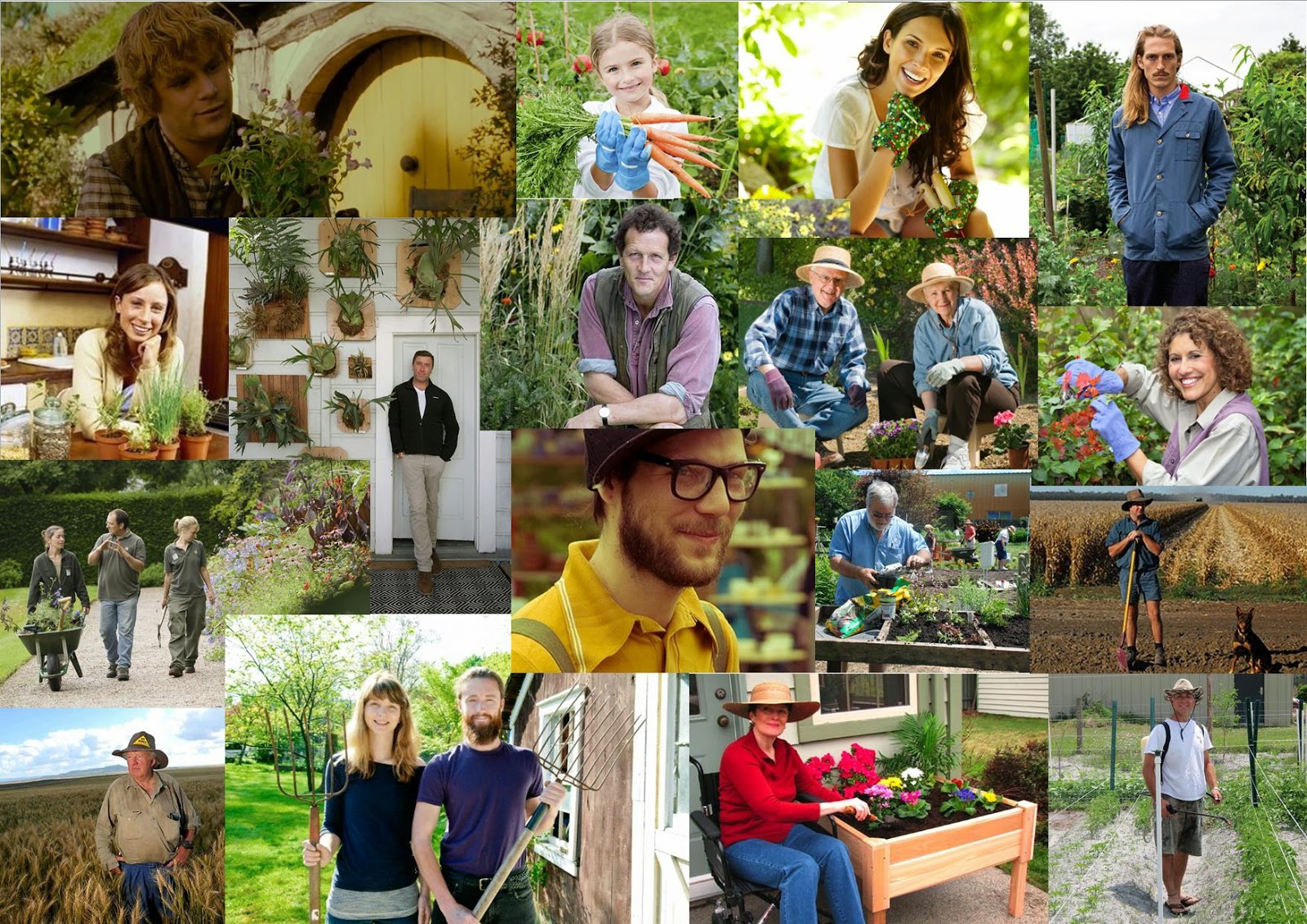I've done some visual research into people who garden, gardening activities and physical environments of gardening.
'gardeners' can include farmers, professional gardeners, home gardeners, hobby gardeners etc. and include different genders, ages, races, cultures and a huge range of personality types. These differences mean gardening is approached in a huge variety of ways.
Gardening and gardens can involve a huge range of activities: relaxing, socialising, watering, weeding, spraying, digging, planting, trimming, pruning, raking, hoeing, mowing etc.
There is huge variety in 'garden environments': public gardens, private gardens, veggie gardens, flower gardens, botanical gardens, parks, city gardens, farms, indoor gardens, outdoor gardens, highly cultivated gardens, low maintenance gardens, community and school gardens etc.
-YVETTE

















































